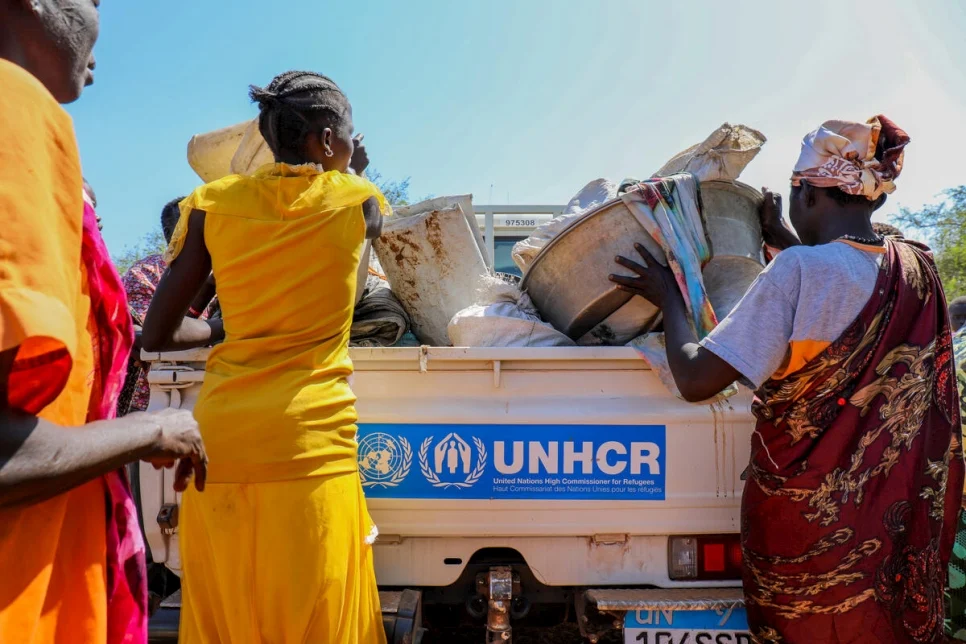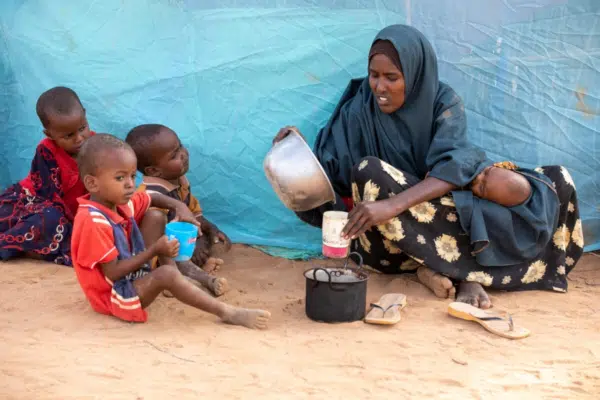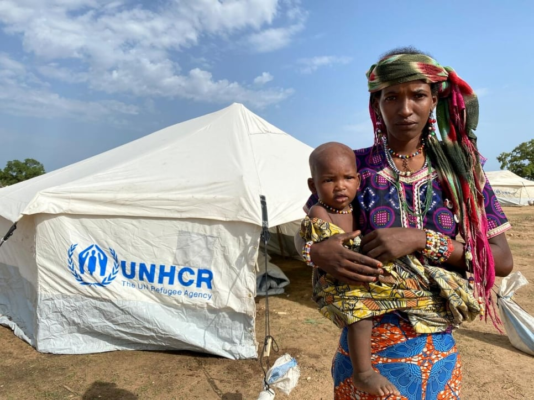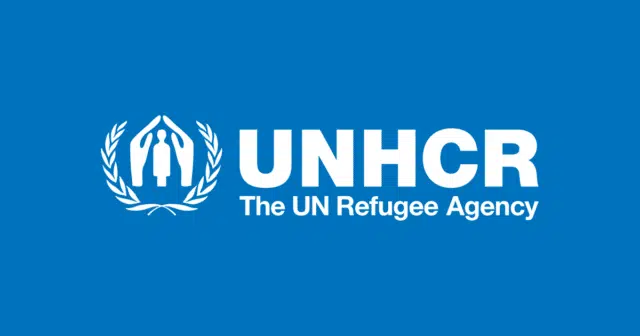
Displaced South Sudanese in Malakal load their remaining possessions onto a UNHCR pick-up truck to be transported to a site for internally displaced people. © UNHCR/Charlotte Hallqvist
UNHCR, the UN Refugee Agency, is alarmed by the escalating armed conflict in South Sudan’s Upper Nile state which has displaced at least 20,000 people since August, some of them forced to flee for their lives up to four times as the conflict rages. At least 3,000 people have already fled to neighbouring Sudan, further intensifying South Sudan’s refugee crisis, the largest in Africa.
The armed conflict erupted in the village of Tonga in Upper Nile on 15 August 2022. Violence has since spread further in Upper Nile, northern parts of Jonglei and Unity states. It is currently advancing in Upper Nile’s Fashoda county and is threatening the town of Kodok.
“Desperation is rising, and more people are fleeing as conflict intensifies,” said UNHCR’s Representative in South Sudan, Arafat Jamal. “Civilians are under attack in this ruthless conflict; we must ensure their protection.”
Women and children and others at high risk make up the majority of those displaced. Some older people or those with disabilities have been unable to flee, compelled to hide in bushes and along the White Nile River during attacks. Fleeing civilians are visibly traumatized and report killings, injuries, gender-based violence, abductions, extortion, looting and burning of properties. Many have lost their homes and been separated from their families.
Last month, Jamal led the first inter-agency visit to the village of Adidiang since it was attacked on 7 September, with some 4,000 civilians sheltering there forced to flee to Malakal and its site for internally displaced people under the protection of the United Nations Mission in South Sudan (UNMISS). The site was originally set up nearly 10 years ago to host up to 12,000 internally displaced people but some 37,000 are accommodated there – already overcrowded before the recent arrivals.
Survivors of the Adidiang attack reported that dozens were killed or wounded, while others drowned in the river when trying to escape the attack. This past Sunday, UNHCR led a further interagency mission to Diel in Jonglei.
“In both Adidiang and Diel, we witnessed the aftermath of raw violence,” said Jamal. “It was heartbreaking to see a clear pattern of attacks on civilians and their homes.”
In Diel, northern Jonglei, some of the displaced are returning to their burnt-out villages and homes. Their situation is desperate. Some are eating wild water plants to survive.
UNHCR, together with UN and NGO partners, has scaled up its response to provide life-saving support to the most vulnerable including in hard-to-reach areas with shelter, relief items, protection services, cash, and other assistance. By using boats to expand our mobile response capacity, UNHCR can now reach people faster and more easily, including in remote and hard-to-reach areas. Despite UNHCR’s support for efforts to de-escalate tensions and promote peace, the situation continues to deteriorate.
In South Sudan, 6.8 million people need urgent life-saving aid due to armed conflict, localized violence, dramatic flooding, worsening food insecurity and economic destabilization.
While more people are fleeing violence and needs are surging, UNHCR is scaling up amidst a severe funding shortfall. By the end of November, just 46 per cent of the US$ 214.8 million needed in 2022 had been received.
For more information, please contact:
- In Juba, Charlotte Hallqvist, hallqvis@unhcr.org, +211 925 580 098
- In Juba, Gift Friday Noah, noah@unhcr.org, +211922654219
- In Nairobi (regional), Faith Kasina, kasina@unhcr.org, +254 113 427 094
- In Geneva, Boris Cheshirkov, cheshirk@unhcr.org, +41 79 433 76 82
- In New York, Kathryn Mahoney, mahoney@unhcr.org, +1 347 574 6552
- In Ottawa, Levon Sevunts, sevunts@unhcr.org, +1 613-286-6975





